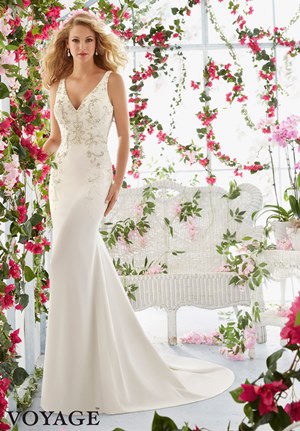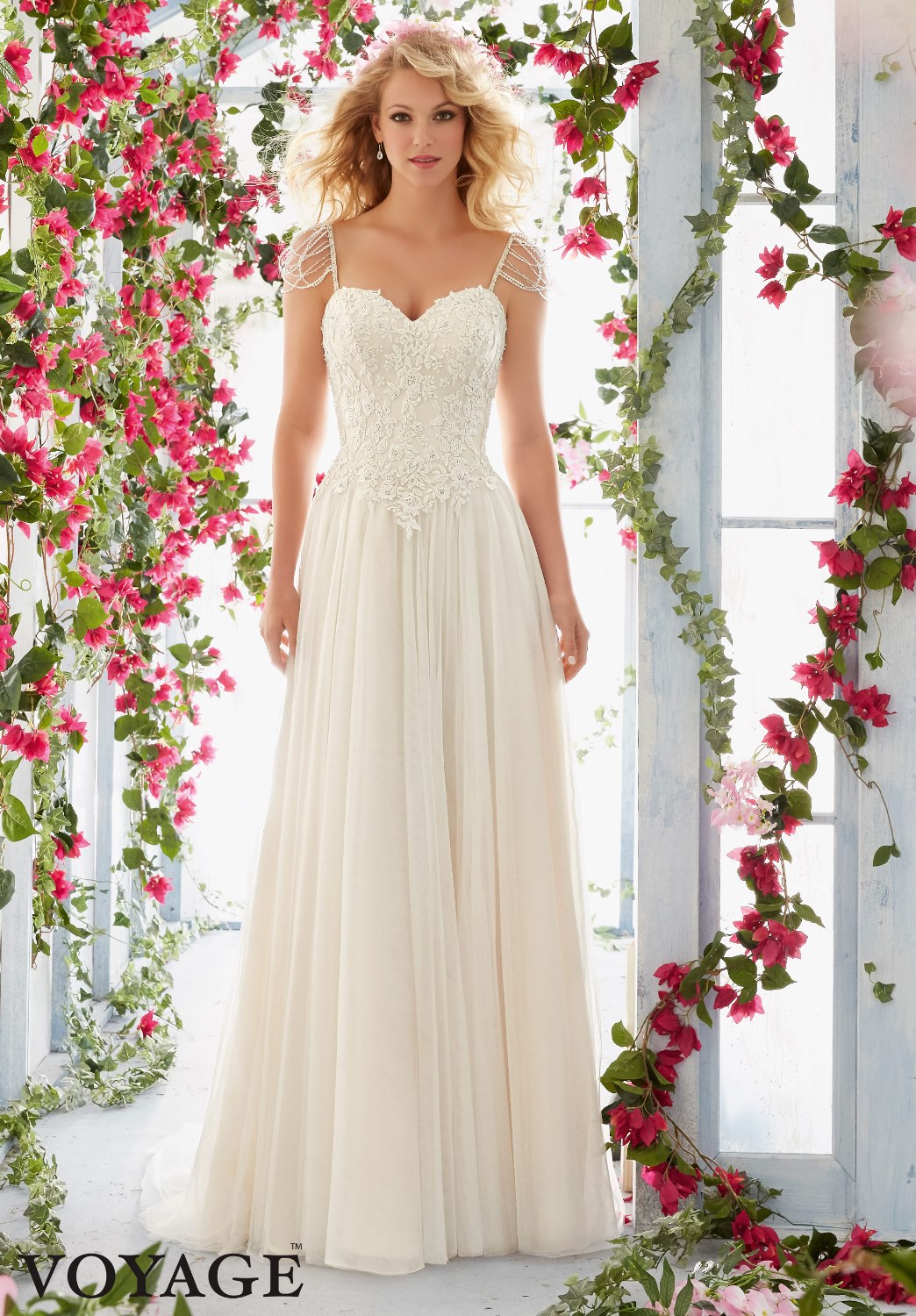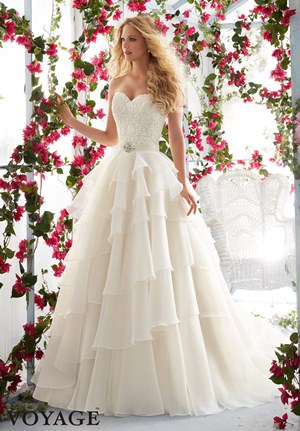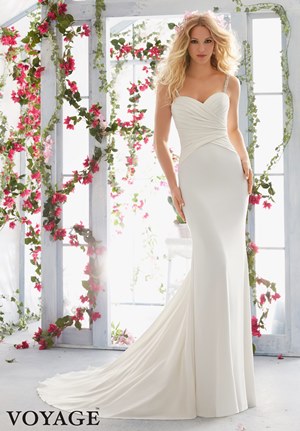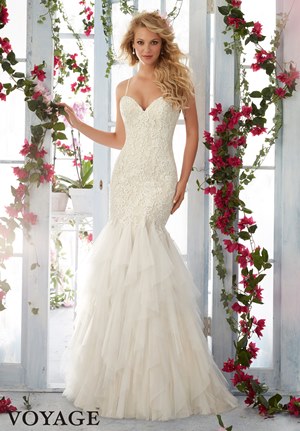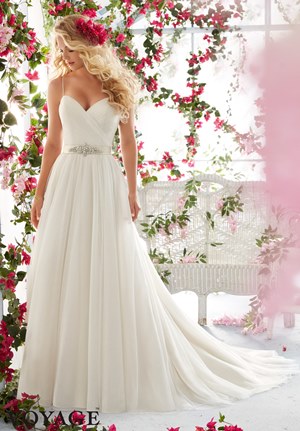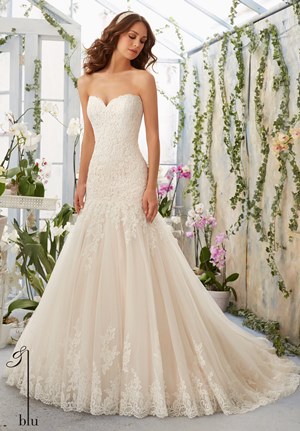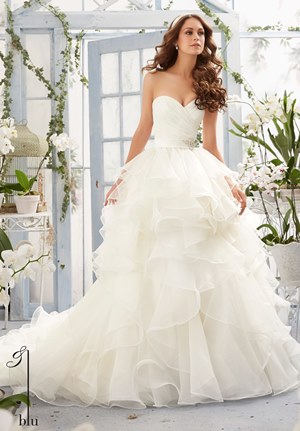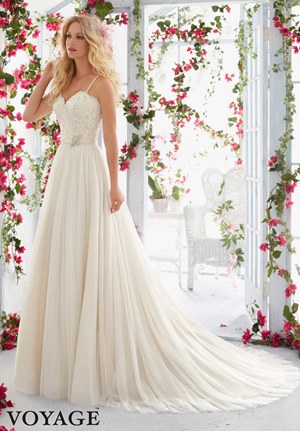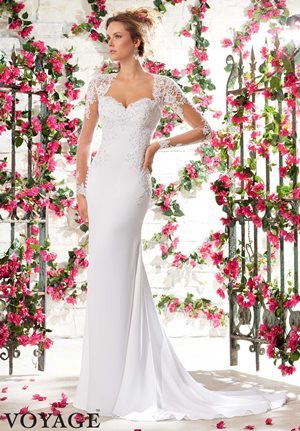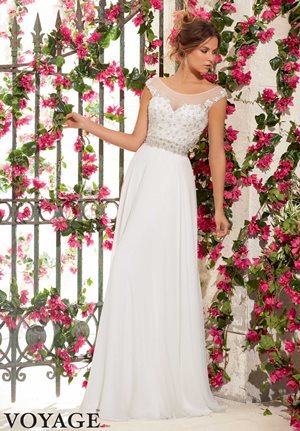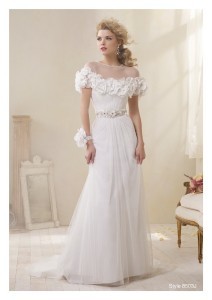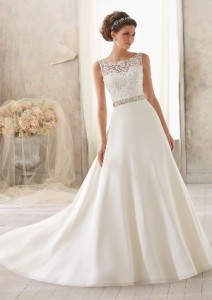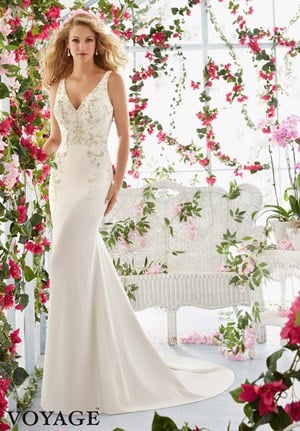
Destination weddings are adventurous and fun but come with their fair share of challenges. The logistics of planning a wedding from far away is seemingly complicated, as you have to do most of the things based on instinct and trust instead of seeing or checking everything in person. Nevertheless, many couples opt to get hitched this way and have their minds set on getting married in a faraway, exotic land as this once-in-a-lifetime occasion has to be as memorable as possible. Thus, we suggest planning a wedding in Mexico, as the variety of landscapes, white-sand beaches, clear water, perfect weather ensure the ideal atmosphere for your special day.
Choosing a wedding dress, however, is one thing that you can do in person even when you are having a destination wedding. Even so, choosing a destination wedding dress is usually more complicated than choosing it for a wedding held in town. Not all wedding gowns are travel-friendly, and with many more factors to consider, making the right choice can be a little more challenging than you can anticipate. So, here are our top tips to help you choose the right wedding dress for your destination wedding and to get it there.
1. Before going wedding dress shopping, know your destination well
Whether you are getting married in your own backyard, or in an exotic beach in the Caribbean, you will always benefit if you research the general conditions at the place, before you go shopping. This is especially important if your wedding is to be held elsewhere, where you aren’t familiar with the place, weather and any other factors that should affect your choice. So, find out all you can about the place before you begin looking for your dress. This will help you narrow down your options to just those that will work. Check on the internet to find out all you need to know. Additionally, consult the venue manager and hotel where you will be staying, for any other information you may require. If you have friends who have visited the place, or are currently living there, gather information from them and find out what options will be practical.
2. Start shopping early
Just the fact that you are getting married abroad, shouldn’t limit your wedding dress choices. Every bride has a particular idea of what she should wear on her day, and if you always wanted to dress in an elaborate gown, you shouldn’t forego your dream because of the destination. Wedding dress options are numerous, and if you start your search well in advance, you will be able to find a choice that appeals to you and will also be practical. Make sure you have enough time to scour through the collections available at boutiques, research and attend dress appointments where you get to see your shortlisted choices in person, and pick a dress that is fully satisfying.
3. Know what you should about fabric
Not all fabrics are equally suitable for all types of weather. Your dress choice should also be based on fabrics that are suitable for the weather at the destination. If the location is particularly humid, you may be better off choosing fabrics that don’t show sweat. On the other hand, if your dream destination is really cool, you may have to cover your shoulders to feel comfortable, or at least accessorize with a warm stole or jacket. Another thing to remember is that some fabrics are more resistant to wrinkling than others. This becomes important when your dress has to travel with you, so it looks fresh on your big day. Here are some tips to help you decide on the right fabric for your wedding dress
- Natural fabrics are best for hot climates. However, materials like cotton can wrinkle easily. Lightweight, natural fabrics like silk are better as these breathe. Consider mixes where the fabric doesn’t show sweat, and is light and less prone to wrinkling.
- When getting married in a cold destination, choosing a heavy gown may make transportation a pain. Instead you can go with natural fibers like cotton, silk and wool blends that may be layered to keep you warm. The other option is to consider accessories like stoles, boleros and jackets to keep you warm when you are outdoors.
- Don’t rule out the possibility of rain or snow. If your destination is particularly prone to showers, your fabric choice is very relevant, as some fabrics will stain on contact with water. Duchess satin is one such example. So, make a suitable choice based on this aspect.
For more practical tips on what will work in different weathers, we suggest you take a look at this article on the Weddings Abroad Website.
5. Be aware of customs to consider
There may be customs that you are unfamiliar with, at the country where you are to be wed. So, make sure to check in advance. Certain places of worship make it necessary for the bride to cover her shoulders and knees during the ceremony, and you do not want to be unprepared for it. In other cases, certain dress styles may not be suitable according to the local customs and norms, and it would be disrespectful to not consider them. When you do your background research, you should learn of any such customs or expectations. You can plan your dress choice accordingly.
6. Discuss alternative options with your bridal salon
Some designer collections allow you to choose between two fabrics, for certain designs. Discuss this possibility with your dress consultant, so she can direct you to dresses that can be done this way. Also do your homework before-hand, so you know which materials make the list. If the bridal boutique also has their own dress collection, it may be easier to get a dress custom-created in a fabric or design of your choice. So, check this out. Most bridal design boutiques will be open to considering your specific needs. If you find a dress that matches your vision, discuss whether you can have it made in another fabric, so it will work for your wedding. Your consultant should be able to give you a general idea of how it will look in the chosen fabric and perhaps show you other pieces in it, that will give you a fair idea of how the end product will be.
7. Make your dress dreams come true with the help of a talented dress maker
If you are unable to find a dress that meets your expectations, while being practical too, turn to a dressmaker for help. Custom creating dresses is a great idea, especially when you want something specific. This allows you have a dress that matches your exact measurements, that will also contain all the features you desire. A talented dress maker will can even work with existing dresses or fabric from heirloom wedding dresses to recreate a gorgeous dress, based on your specifications. If you already have chosen a dress, but you think it is necessary to make a few adaptations, let your dressmaker know as early as is possible. Not only will a good dressmaker be able to guide you on what should be done to render a dress suitable for a particular condition, they will also be able to implement these changes appropriately so it isn’t uncomfortable to wear.
8. Contact your airline to find how you can transport your dress
It would be ideal if your dress salon can deliver your dress to the destination. This may, however, not be possible unless the company has a branch in the location. In this case, you will have to find the best possible way to get your dress to the wedding safely. Although most airlines allow you to carry your wedding dress in your hand luggage, how it will be handled is a matter of concern. Most airlines will agree to hang it in their first class wardrobe space, if they have one. Consider yourself lucky, if this facility is available. Your dress will most likely arrive with minimum possible damage. If your airline doesn’t have this provision, things get complicated. If this is the case, there is an option you should consider seriously and this brings us to the next point.
9. Book your dress a seat on the flight
No, we are not joking! Although we know that this can be expensive, at times this is the only way to get your dress to the destination with minimum possible damage. Brides are always advised to carry their gown on them, and not check it in with the rest of their luggage. Even while you have it with you, there is the risk of having it stashed in an overhead compartment, due to lack of space. Now, if you are lucky enough to be able to hang it up beside your seat in a garment bag, you will still risk it getting crinkled in the cramped space or stained from an accident. So, unless your bridal salon is able to ship your dress directly to the destination after all the works and alterations are complete, consider flying your dress to the location in style, on its own ticket. The only other option is to get yourself a special wedding dress carry box, and choose a dress that will pack perfectly. Chiffon wedding dresses usually fit the bill. So, if a separate ticket is off-budget, take this route.
10. Get yourself insured
When it comes to wedding insurances, it is largely a matter of choice. Although you may feel it is a waste of money, taking an insurance on your wedding is a good idea when you are getting married away from home. The chances of things going wrong, and your dress being damaged are higher when you are traveling with it, than if you just had to take it home from the salon. Finding a solution for the mishap may not be as easy either. So, be wise and insure it. This will not only cover any likely unexpected expenses, but will also allow you reduce your stress to a certain extent.
11. Find a local dry cleaner for last-minute touch-ups
Even before you set out for the wedding, check if there is a reliable and recommended dry cleaner at your destination. This information will come in handy, should your dress require any last-minute touch-ups. Make sure that the person has experience handling wedding dresses, and will be able to steam or press your dress, without damaging it. If your dress isn’t too disturbed during the journey, simply hang it up in the bathroom and run the shower for few minutes, till the room becomes steamy. All the while, make sure that the dress is nowhere near the water, so it can’t get wet. Most of the crinkles will come out within minutes of it being in the room, and your dress will be in top-shape for your wedding day.
12. Quickly prepare it for preservation after the wedding
Whether you choose to keep your wedding dress as a keepsake, or intend to sell it off after your wedding day, it is imperative to attend to your wedding dress soon after the wedding. Your dress may have stains or show signs of damage after all the wear and tear it undergoes on the day. So, you should get it dry-cleaned and preserved within minimum time. If you have a long honeymoon planned, send your dress home with a trusted bridesmaid who can get it to the cleaners as early as possible. Meanwhile, pack it into a clear plastic bag and hang it up just like you did before the wedding, so there is no further damage to it.
Are you planning a destination wedding for yourself? If so, enlighten us about your wedding dress shopping experience or ideas that helped you choose your dress.
With a little care and planning, it is possible to find the perfect dress for your wedding and get it intact to the destination. At Best for Bride, you can find collections that are specifically created for the destination wedding. The Mori Lee Voyage Collection is one of these, and you will find a fabulous selection of dresses in this collection. To check it out, or browse through all the other collections we feature in our inventory, visit our website by clicking this link here.


